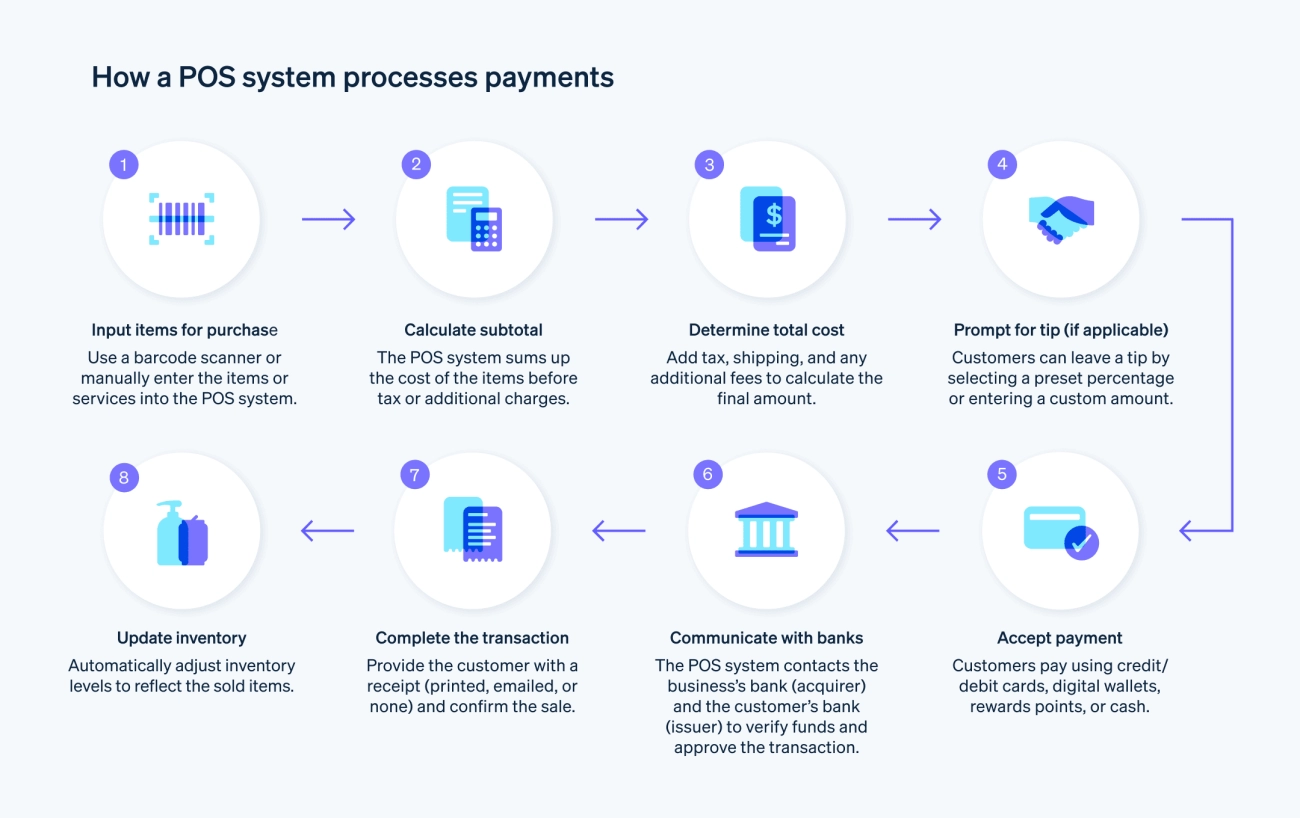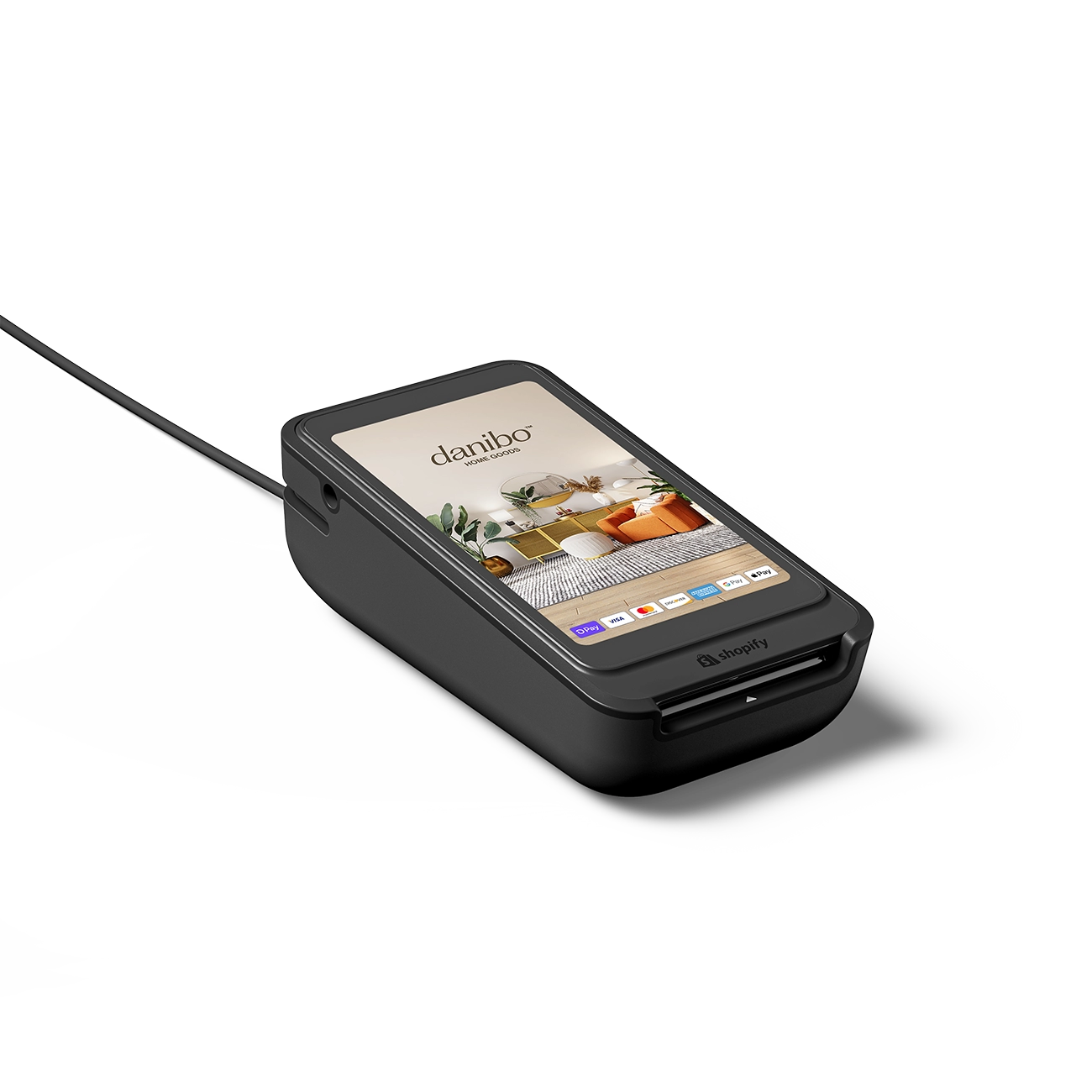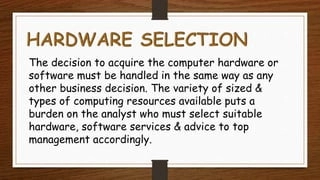POS Terminal Hardware Components Guide for Reliable Cash Registers

What is a POS Terminal
A POS terminal (Point of Sale terminal) is the central device businesses use to complete sales transactions. It’s where customers pay for goods or services, and where inventory, sales data, and payment processing all come together. The purpose of a POS terminal is to simplify checkout, improve accuracy, and speed up sales operations — whether in retail, hospitality, or service industries.
Types of POS Terminals
Understanding the right POS terminal hardware components starts with knowing the types of terminals available:
Fixed POS terminals
These are traditional, stationary setups you see at counters. They combine hardware like touchscreen monitors, receipt printers, and cash drawers in one place.
Mobile POS terminals
Portable devices or tablets equipped with card readers and minimal peripherals. They work on wireless networks, ideal for busy or on-the-go businesses like food trucks or pop-up shops. Explore more about mobile POS hardware.
Cloud-based POS terminals
These systems rely on internet-connected software hosted in the cloud, paired with hardware that can be fixed or mobile. Data syncing across multiple locations happens seamlessly, useful for businesses expanding or with remote operations.
Hardware Versus Software in POS Systems
People often ask: “What’s more important hardware or software?” The truth is, both are critical — but they serve different roles.
Hardware is the physical part that handles input and output: touchscreen monitors, printers, card readers, and scanners. It’s the foundation of your POS setup, ensuring fast, reliable transaction handling.
Software powers the functionality behind the scenes — managing sales, inventory, reporting, and customer data. It communicates with hardware to process payments and print receipts.
Without solid hardware, even the best software can falter — resulting in slow checkout or hardware failures. Conversely, outdated software limits what your hardware can do. So, well-integrated, high-quality hardware components matched with robust software form the backbone of an efficient POS system.
For deeper insights on hardware integration, check out our guide on POS hardware integration.
Core Hardware Components of a POS Terminal Hardware Components

When setting up a POS terminal, the hardware you choose directly impacts performance, reliability, and customer experience. Here’s a breakdown of the essential POS system hardware components every business should understand.
Touchscreen Monitor Display Features and Types
The touchscreen monitor is the main interface where users interact with the POS system. There are two primary types:
- Resistive Touchscreens: Work by pressure. They’re durable and usually cheaper but less sensitive, requiring a firm tap or stylus.
- Capacitive Touchscreens: Detect the electrical properties of your finger, offering faster, more precise responses and multi-touch support.
For US businesses, capacitive screens are popular because of their smooth user experience, but resistive might suit rugged environments like warehouses.
Central Processing Unit CPU Role
The CPU is the brain behind your POS terminal, processing sales, inventory, and payment tasks quickly.
- Integrated CPUs come built into the POS device, simplifying setup and saving space.
- Separate PCs or terminals offer more power and flexibility but need more room and maintenance.
Most small to medium US retailers prefer integrated CPUs for simplicity, while large stores might opt for separate PCs for heavy-duty processing.
Receipt Printer Types and Considerations
Receipts remain vital, and printer choice affects speed and print quality:
- Thermal Printers: Use heat-sensitive paper for fast, quiet printing. They’re low maintenance but require special paper.
- Impact Printers: Use a physical print head striking ink ribbons. They handle multi-part forms but are slower and noisier.
Thermal printers are the US standard for most retailers due to speed and cost-efficiency.
Cash Drawer Features and POS Integration
A cash drawer secures physical cash in your store. Key features include:
- Locking mechanisms to prevent unauthorized access.
- Integration with POS software, so it opens only after approved sales.
Look for drawers with sturdy construction and compatibility with your POS system for smooth operation.
Barcode Scanner Types and Usage Impact
Barcode scanners speed up checkout by quickly reading item codes. Common types include:
- Laser Scanners: Accurate over longer distances and work well with standard barcodes.
- CCD Scanners: Use an array of sensors; great for close-up scanning.
- 2D Imaging Scanners: Read QR codes and barcodes on screens or damaged labels.
For US retailers, 2D scanners offer the best flexibility, supporting modern coupon codes and mobile payment options.
Payment Card Reader Options and Security
Payment card readers are critical for smooth and secure transactions. Key types are:
- Magnetic Stripe Readers: Swipe cards but becoming outdated.
- Chip EMV Readers: Read smart chip cards; more secure and widely used in the US.
- Contactless NFC Readers: Accept tap payments from phones and cards.
Ensure your hardware meets PCI compliance standards to protect customer data and reduce fraud risk.
Customer Display Pole Benefits
A customer display pole shows transaction details to buyers in real-time, boosting transparency and trust. Depending on your business type, it might be:
- Optional in small retail setups.
- Mandatory in industries where proof of transaction is crucial.
These displays help reduce errors and build customer confidence.
Additional Optional POS Terminal Hardware Components for Enhanced Performance
Beyond the essential POS system hardware components, you can boost your setup with optional accessories tailored to your business needs. These extras improve efficiency, accuracy, and customer experience, especially in specific industries like restaurants or grocery stores.
Kitchen Order Printers and Displays
For restaurants and food service businesses, kitchen order printers or display screens are game changers. They:
- Send orders directly from the POS to the kitchen, cutting down on errors.
- Help kitchen staff track orders in real time.
- Speed up food preparation and delivery.
This hardware is essential for busy kitchens aiming for smooth workflow and faster table turnover.
Scales for Grocery and Retail Stores
If you sell items priced by weight, like produce or bulk goods, POS scales are a must-have. They:
- Integrate with your POS terminal to automatically calculate prices.
- Ensure accurate billing to avoid customer disputes.
- Improve checkout speed and reduce manual entry errors.
PIN Pads for Secure Payment Processing
Secure payment input is critical in every POS setup. PIN pads provide:
- A dedicated, tamper-resistant device for customers to enter secure PINs.
- Support for EMV chip cards and contactless payments.
- Compliance with payment security standards like PCI.
These devices foster trust and reduce fraud risks during transactions.
Signature Capture Devices
Some businesses still require signatures for payments or confirmations. Signature capture devices:
- Work seamlessly with the POS software.
- Offer digital records, saving paper and reducing fraud.
- Streamline customer checkouts and returns.
Useful in service industries and any setup needing signed authorizations.
External and Cash Register Keyboards
While touchscreen monitors are common, external keyboards or specialized cash register keyboards can:
- Speed up data entry for high-volume environments.
- Provide tactile feedback for easier use.
- Include programmable keys for frequent tasks.
They are particularly helpful in retail or hospitality settings where speed and accuracy matter.
How to Choose the Right POS Terminal Hardware Components for Your Business

Selecting the right POS system hardware components is crucial for smooth daily operations and long-term success. Here’s what to consider to match your POS terminal accessories with your business needs.
Understand Your Business Type
Your industry heavily influences which cash register hardware parts you need:
- Retail — Focus on fast barcode scanners, reliable receipt printers, and payment card readers that handle high traffic smoothly.
- Hospitality — Prioritize kitchen order displays, touchscreens with easy user interaction, and customer-facing displays for transparency.
- Service-Based — May need mobile or cloud-based POS hardware for flexibility and quick payments, alongside secure PIN pads.
Assess Transaction Volume and Speed Requirements
Your expected customer flow determines how robust your hardware should be:
| Transaction Volume | Hardware Focus | Why It Matters |
|---|---|---|
| Low | Basic CPU and peripherals | Cost-efficient, enough for light use |
| Medium | Mid-range CPU, thermal printers | Balances speed and durability |
| High | High-performance CPU, fast printers, multiple scanners | Avoid bottlenecks, handle crowds |
Speed and accuracy in scanning and payment processing reduce wait times and improve customer experience.
Budget and Return on Investment
- Set a realistic budget but don’t compromise on essential features.
- Investing in quality hardware cuts down maintenance costs and downtime.
- Look for components that offer a good balance between upfront cost and long-term ROI.
- Consider modular hardware from trusted suppliers like SDLPOS which lets you scale as your business grows.
Ensure Compatibility with SDLPOS Software Solutions
Choosing hardware that works seamlessly with SDLPOS offered software simplifies setup and operation:
- Verify that CPUs, payment card readers, and printers are fully supported.
- Integration reduces glitches, lowers training time, and speeds up software updates.
- Using an all-in-one system keeps your POS running smoothly and makes troubleshooting easier.
Look for Local Warranty and Technical Support
Having local warranty and support is essential for quick fixes and minimize downtime:
- Choose suppliers like SDLPOS that provide on-site service or fast replacements.
- Local technical support ensures your hardware issues get resolved without long delays.
- Confirm warranty terms cover core components like printers, scanners, and CPUs.
Table for Choosing POS Hardware Components
| Factor | Key Considerations |
|---|---|
| Business Type | Retail, Hospitality, Service |
| Transaction Volume | Low, Medium, High – hardware scaled accordingly |
| Budget and ROI | Balance cost with quality and scalability |
| Software Compatibility | Confirm full support with SDLPOS software |
| Warranty and Support | Prefer local service and quick-response warranties |
Choosing the right components of a point of sale terminal tailored to local business needs ensures you get the reliability and efficiency your customers expect every day.
Maintenance and Upkeep of POS Hardware Components
Proper maintenance of your POS terminal hardware components is critical to keep your system running smoothly and avoid costly downtime. Here’s what you need to know about routine care, troubleshooting, and timely replacements.
Routine Cleaning and Troubleshooting Tips
- Keep screens and surfaces clean. Use a soft, lint-free cloth slightly dampened with water or approved screen cleaner to wipe down POS touchscreen monitors and other hardware regularly. Avoid harsh chemicals that can damage components.
- Check cables and connections. Loose or damaged cables can cause interruptions. Make sure all POS hardware connections—from barcode scanners to payment card readers—are secure.
- Dust printers and vents. Dust buildup in receipt printers or CPU vents can cause overheating or paper jams. Use compressed air to clean these areas monthly.
- Run regular system checks. Many POS systems include built-in diagnostics that help identify hardware problems early.
- Train staff on proper use. Misuse is a leading cause of hardware failure. Simple guidelines for handling devices can extend their life.
Software Updates and Hardware Functionality
- Stay up to date with POS software updates. Updates often include optimizations or fixes that improve hardware compatibility or performance.
- Verify hardware compatibility before updates. Some software updates may require newer hardware drivers or even hardware upgrades. Check with your POS provider to avoid interruptions.
- Backup your data regularly. During updates or troubleshooting, data loss can occur. Keeping backups protects your business.
When and How to Replace POS Hardware Components
- Signs it’s time to replace hardware:
- Frequent malfunctions or slow performance.
- Incompatibility with new software features.
- Physical damage that affects operation or security.
- Outdated technology that limits transaction options (e.g., lack of NFC for contactless payments).
- Choose replacements that match your business needs. Consider transaction volume, device durability, and compatibility with your existing system.
- Plan replacements in advance to avoid downtime; schedule during off-hours or slow periods.
- Work with trusted local suppliers like SDLPOS for quality hardware and installation support tailored to U.S. businesses.
By maintaining your POS system hardware components with regular cleaning, proper troubleshooting, timely updates, and smart replacements, you ensure your business keeps transactions running smoothly and securely.
Why Choose SDLPOS for Your POS Terminal Hardware Components
When it comes to selecting POS terminal hardware components for your business, SDLPOS stands out as a trusted local cash register supplier. Here’s why partnering with SDLPOS makes sense for your business needs:
Trusted Local Cash Register Supplier
- Local expertise means SDLPOS understands the unique demands of US businesses.
- Immediate access to hardware and accessories without long waits or shipping delays.
- Personalized service that suits local retail and hospitality environments.
Quality Hardware Components Tailored to Your Business
- SDLPOS offers reliable POS system hardware components designed to fit your specific business type—whether retail, restaurant, or service-based.
- Hardware is tested for durability, speed, and compatibility with the latest POS software.
- Access to components of a point of sale terminal that support smooth transactions and minimal downtime.
Dedicated Customer Support and After Sales Service
- SDLPOS provides professional support to help set up and maintain your POS hardware.
- Assistance with POS hardware maintenance tips and troubleshooting to keep your system running.
- Ongoing after sales service for quick replacement or upgrade of cash register hardware parts.
Competitive Pricing and Customizable POS Setups
| Feature | Benefit |
|---|---|
| Custom POS hardware bundles | Pay for only what your business needs |
| Flexible pricing options | Affordable solutions for small to large businesses |
| Technical support included | Reduces long-term maintenance costs |
- Packages can be tailored to budget considerations without sacrificing quality.
- Focus on return on investment by choosing the right mix of hardware that adapts as your business scales.
Choosing SDLPOS means choosing a reliable partner that delivers quality POS terminal hardware components, seamless integration with your existing software, and expert support tailored to local US businesses.
